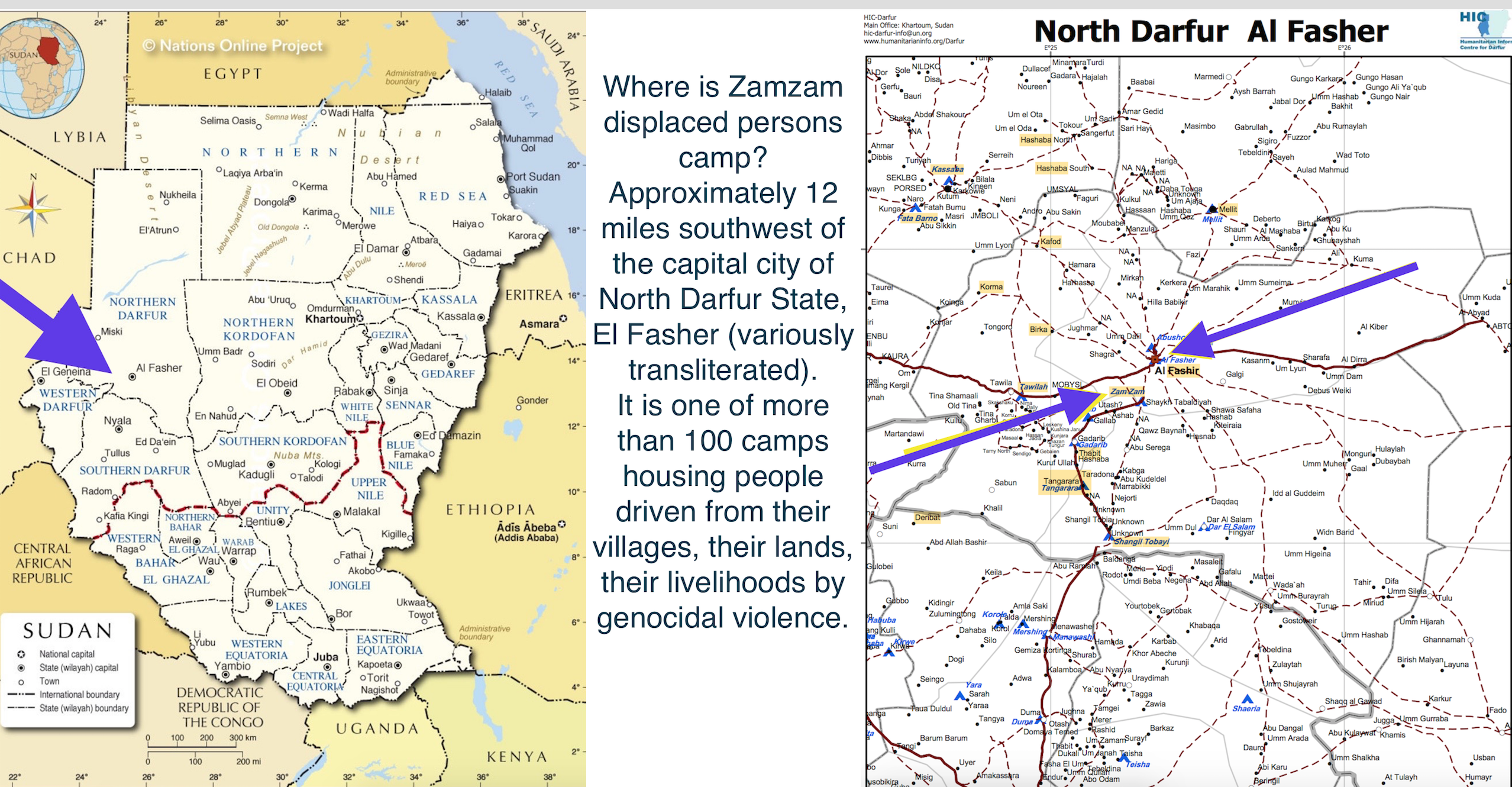December 2022 | ANNEX 3:
The character of Zamzam Internally Displaced Persons camp (North Darfur)
Nancy Reeves, Editor and Funding Advisor; Julie Darcq, Online Campaign Coordinator
The Geography of Zamzam Internally Displaced Persons Camp
Aerial view of Zamzam IDP camp, stretching for well over two miles from the northwest to southeast corner
Population of the camp and current food insecurity
The UN figure for the population of Zamzam is 120,000 (a figure accepted by the European Union and others). The consensus among those providing governance and coordination in the camp—the omdas and sheikhs representing the villages from which displaced people have come—have indicated that the real figure, including recent arrivals and those not included on the roster of the UN World Food Program, is more than 400,000. My query of a senior Khartoum-based official for the UN High Commission for Refugees yielded an interesting response: “Mr. Reeves, the estimate you are using is going to be much more informed than any UN estimate”—a bracing if terrifying bit of honesty from the UN, which has for years sought to minimize or even artificially deflate the number of IDPs in Darfur. The coordinating counselor of Team Zamzam has offered an estimate, base on extensive Team surveys of Zamzam over the past two and a half years that supports the figure offered by the omdas and sheikhs.
There has been no meaningful, statistically responsible census taken of the camp population for many years—by the UN or any international non-governmental organization (INGO).
My query of my colleague Gaffar, who lived in Zamzam and whose family still resides there (along with most his village from what is now East Darfur), yielded the following observation about the population of this massive IDP camp:
According to the estimates by Omdas, sheikhs, youth groups, neighbourhood committees, and women groups, the camp’s population it is estimated to be over 480,000
The last census was carried out in 2014 by international organizations such as the International Organization for Migration, German INGOs, and the UN’s World Food Program produced fierce disputing of the reported statistics. The primary objection—still valid today—is that the total was based on the number food relief card holders. Such a methodology was, and is, strongly rejected, given the massive number of people who do not have such cards.
Information from the international community on living conditions in Zamzam is equally poor; a notable example is the US Agency for International Development (USAID), which provides information so inadequate as to create serious distortions in our understanding of the situation on the ground; and sourcing for the information that is provided is seriously deficient.
Our best global assessment of food insecurity comes from last June, and while offering a reasonable assessment at the time—and indicated an extremely serious crisis already in the making—the failure of the past agricultural season because of insecurity exacerbates the food crisis tremendously:
 At the time of this estimate June 2022), the coordinating counselor for Team Zamzam shared the following assessment:
At the time of this estimate June 2022), the coordinating counselor for Team Zamzam shared the following assessment:
Daily starvation and malnutrition are not a new thing for camp residents, especially the people of Zamzam who long ago lost their hopes and confidence in the international community. But now the situation is becoming increasingly difficult: the minimum food requirement of one daily meal is becoming increasingly scarce for the more than 90% of the population whose lives used to depend on agriculture.
The almost total loss of the past agricultural season (May – October/November) because of violence and insecurity further deepens the present crisis.

